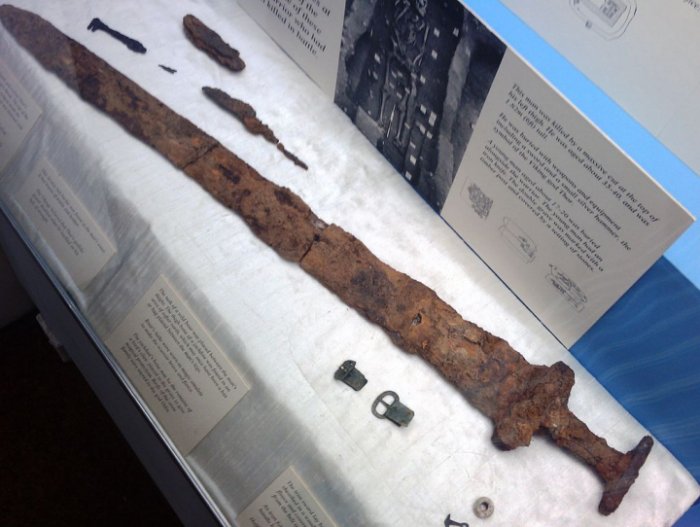Jan Bartek - AncientPages.com - In 865 A.D., the Great Heathen Army, also called the Great Viking Army, significantly impacted British history by crossing the sea. This tough force was led by Ivar the Boneless, Halfdan Ragnarsson, and Ubba—sons of Ragnar Lodbrok—and joined by Dane Viking chieftain Guthrum. Their invasion began in East Anglia.
Credit: Pixabay - Public Domain
Since the late 8th century, Viking raids have been common in the British Isles. However, during the winter of 865, a pivotal change reshaped Britain's political, economic, and social structures. Unlike previous quick summer raids aimed at acquiring silver and slaves, Vikings chose to stay through winter and integrate into local communities. Many settled permanently in England, acquiring land and fostering a new Anglo-Scandinavian culture.
The army that arrived in 865 is known as the 'Great Army,' marking its long-term presence. This presence spurred the development of new towns and industries while altering power dynamics significantly. These changes eventually led to King Alfred the Great's rise and established Wessex as a leading kingdom in Anglo-Saxon England.
Although much is known about this historical period, recent discoveries continue to provide valuable insights into how and why the Great Heathen Army strategically utilized Britain's terrain. Numerous sites associated with the Viking army's incursions into Anglo-Saxon England over a millennium ago have been uncovered, yet many remain undiscovered.
A sword of a Viking buried at Repton in Mercia. This sword is now in the Derby Museum. Credit: Roger - CC BY-SA 2.0
Professors Dawn M Hadley and Julian D Richards from York University have meticulously traced the archaeological evidence of these Scandinavian invaders, revealing previously unknown sites and routes. Their research highlights that the importance of various ingots, gaming pieces, and other artifacts found by metal detectorists has been underestimated until now.
Additionally, they identified approximately 50 new locations believed to have been visited by the Viking great army by comparing artifacts found nationwide with those from their primary camps at Torksey in Lincolnshire and Aldwark in North Yorkshire.
Professor Richards has compellingly demonstrated that gaming pieces, originally crafted at Torksey, have been found over 100 miles away along key routes and transshipment points. These pieces are part of a strategic board game similar to chess. The artifacts analyzed include dress fittings like strap ends and exchanged bullion—especially silver, gold, and copper-alloy ingots, weights, and Islamic dirhams—items the Vikings acquired from far-off lands such as Ireland and the Islamic world.
The reconstructed Hnefatafl gameboard. Image credit: Andreas Zautner - Public Domain
In Yorkshire, a significant site was identified through metal detector finds, including a cross-shaped mount whose matching half was unexpectedly discovered miles away in Lincolnshire. Hadley argues that these findings vividly illustrate how Viking army members distributed loot among themselves.
Hadley further explains that this evidence suggests the great army was not merely a military force; it functioned as a community with men, women, children, craftworkers, and merchants. The new discoveries reveal diverse activities at their camps—from crafting metalwork to minting coins and engaging in trade.
See also: More Archaeology News
Richards emphasizes that researchers or others have not previously recognized many of these sites as locations associated with the Great Army. While some sites indicate brief periods of Viking presence, others suggest that the great army laid the foundations for enduring Scandinavian settlements in those regions. This evidence is crucial for understanding the true nature of Viking influence across these areas.
Their book, "The Viking Great Army and the Making of England, " explores some of their earlier research." The latest findings, however, will be presented in their forthcoming book, "Life in the Viking Great Army: Raiders, Traders, and Settlers," set to be published by Oxford University Press in January.
This new publication will include discoveries such as a fragment of scrap lead from Aldwark depicting Fenrir, the monstrous wolf from Norse mythology, along with fittings from harnesses and sword belts. Additionally, many previously unseen artifacts will be showcased at the Yorkshire Museum's new Vikings display opening in July.
Written by Jan Bartek - AncientPages.com Staff Writer
Expand for references






